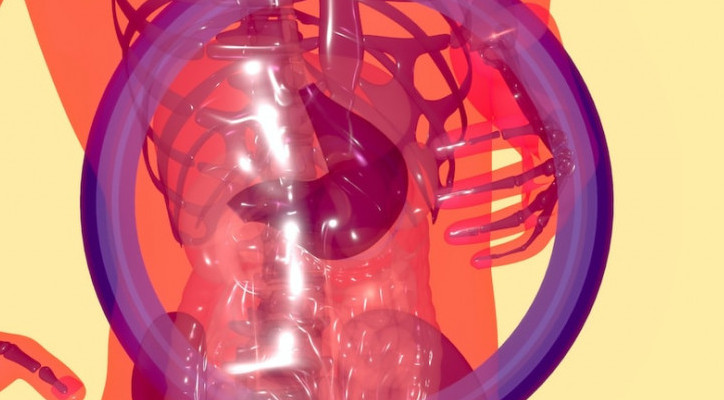
Many people associate heartburn and upset stomachs with increased stomach acid. However, it’s often a matter of low stomach acid. It might surprise you to learn that many gastrointestinal disorders stem from insufficient stomach acid production. A condition known as hypochlorhydria.
When you have low stomach acid, digestion can become problematic. Leading to various gut issues, such as malnutrition, H. pylori infections, irritable bowel syndrome (IBS), and bacterial overgrowth. Surprisingly, this problem is not limited to the elderly; even infants can experience it, though it’s less common.
While it’s essential to consult a healthcare provider for a proper diagnosis. There are several home-based methods and assessment techniques that can help you gauge your stomach acid levels. In this article, we’ll explore how to test for low stomach acid at home.
Testing Methods for Assessing Hydrochloric Acid (HCL)
- Baking Soda Test:

- The Baking Soda Test provides a simple and cost-effective way to measure your stomach acidity, although might not be the most accurate method.
- It relies on the reaction between bicarbonate (baking soda) and stomach acid (HCL), which generates carbon dioxide gas. The presence of sufficient HCL results in burping, while the absence of burping suggests low stomach acid.
Procedure:
- Conduct this test on an empty stomach first thing in the morning.
- Mix 1/4 teaspoon of baking soda with 4-6 ounces of water until dissolved.
- Drink the mixture and time yourself
Interpretation:
- Burping within 2 minutes indicates adequate stomach acid.
- Burping between 3-5 minutes indicates low acid levels.
2. Betaine HCl Challenge Test:
- This method involves taking a Betaine HCL supplement during meals to gauge your HCL acid levels.
- It provides more accurate results than the baking soda test.
- Procedure:
- Consume a protein-rich meal (4-6 ounces).
- Take 1 Betaine HCL pill at the start of the meal.
- Pay attention to any sensations during and after the meal.
Interpretation:
- A warm or burning sensation in the stomach suggests enough stomach acid.
- The absence of sensations or not getting relief from symptoms like bloating or indigestion indicates low acidity.
3. The Beetroot Test: 
- This test provides a visual sign of stomach acid levels by observing changes in the color of your urine after consuming beetroot juice.
- Procedure
- Drink 4-6 ounces of beetroot juice.
- Check the color of your urine over the next 24 hours
Interpretation:
- Pink to red urine color suggests adequate HCL.
- No change in urine color may indicate low HCL.
Understanding Stomach Acid
Before discussing the different methods of testing stomach acid at home. Let’s clarify the crucial role of gastric acid, also known as hydrochloric acid (HCL), in our digestive system. HCL plays several vital roles, including:
- Digestion: It breaks down food into smaller particles for nutrient extraction.
- Absorption of Nutrients: Nutrients like calcium, iron, and vitamin B12 need HCL for absorption.
- Sterilization: HCL helps eliminate harmful pathogens in the food we consume.
- Activation of Digestive Enzymes: Stomach acid activates enzymes necessary for breaking down proteins.
What’s the root cause of low stomach acid?
- Aging: Stomach acid secretion decreases with age, making low HCL common among those aged 65 and older.
- Atrophic Gastritis: Damage to stomach cells compromises HCL secretion, often caused by factors like alcohol consumption, H. pylori infections, and autoimmune diseases. Making reduced HCL or none at all.
- Medications for Acid Reflux: Prolonged use of acid-reducing medications can reduce or completely halt stomach acid production.
- Chronic Stress: Constant stress can decrease HCL secretion.
- Stomach Surgery: Gastric bypass surgery can lead to low HCL levels.
How can I tell if I have low stomach acid?
The following symptoms can indicate low HCL levels, though they may also be associated with other digestive issues:
- Indigestion: Symptoms include bloating, belching, excessive flatulence, and a feeling of fullness.
- Food Sensitivities: When proteins do not get digested because of low HCL in the gut, they cross into the bloodstream creating havoc and causing allergies
- Acid Reflux: Despite its name, acid reflux can result from low HCL levels, leading to heartburn and chest pain.
- Nutritional Deficiencies: Low stomach acid impairs nutrient absorption, leading to symptoms like fatigue and muscle weakness.
- Skin Issues: Some individuals may develop skin problems like hives and acne due to nutritional deficiencies.
How do you treat low stomach acid?
While there are natural remedies for low stomach acid, it’s crucial to consult your healthcare provider before attempting any treatment. Here are some approaches:
- Apple Cider Vinegar (ACV): Consuming ACV before meals can balance gut pH. Mix one tablespoon of ACV with a small amount of water before ingesting.
- Lemon Water: Drinking lemon water before meals can stimulate acid production in the gut, aiding digestion for some individuals.
- Betaine HCL Supplements: These supplements can increase stomach acidity levels. In fact, one practitioner named Dr. Jonathan Wright said “Supplementing stomach acid is not your ordinary run-of-the-mill grocery supplement”. This means that if Betaine HCL is not used properly there are consequences to avoid this he mentions four mistakes to prevent them.
Mistake 1. Don’t use Betaine HCL when you are taking anti-inflammatory medications such as aspirin, Ibuprofen, and Advil. The damage caused by these drugs can make things worse when you take Betaine HCL. increasing the risk of GI bleeding.
Mistake 2. Taking Betaine HCL without pepsin. Pepsin is crucial for the breakdown of protein to be absorbed. Without it, nothing is gonna happen. Hence taking Betaine HCL will be useless. So make sure the brand you take has pepsin.
Mistake 3. Consuming the wrong food with Betaine supplement. You need a protein meal when take it because protein needs acid and pepsin to digest the food. Unless you take a meal with 15gms of protein don’t take it. Otherwise, you’ll hurt yourself.
Mistake 4. Wrong dose of Betaine HCL. According to Dr. Jonathan Wright. The dose that’s effective for an average adult is 5-7 capsules of 650mg per meal with pepsin which means if you take. It can be less for some people or more for others. Since we all have different bodies. He also said it might take some time to adjust the right dosage that why it is important to work with a skilled practitioner.
- Chew Your Food Thoroughly: Proper chewing can enhance stomach acid production.
- Digestive Bitters: Herbs like dandelion and bitter melon can promote stomach acid. These can be taken as tinctures or teas before meals.
- Diet Modifications: Reducing processed foods, alcohol, and caffeine while increasing the consumption of fermented and whole foods can improve stomach acidity production.
In Conclusion
Testing for low stomach acid at home can provide some insight, but it’s not a definitive diagnostic tool. Always consult your healthcare provider for proper evaluation and guidance. Keep in mind that individual results may vary, as what works for one person may not work for another.

I am one of those people who thought I had high stomach acid, and after reading through your in-depth article, it seems the opposite may be true! Learning how to test for low stomach acid at home, using the methods you describe, I will now try to see which is the case: low stomach acid or high stomach acid.
Most certainly up to now, taking pills has been the solution for upset stomach bouts, with mixed results. I am very glad to know that I may be entirely backward in my thoughts of what is going on in my stomach. The easiest test for me to take is the beetroot, as I drink a healthy smoothie daily. I will replace that with the beetroot to do the test.
I do take small amounts of Apple Cider Vinegar with Mother (ACV) in my smoothies, and add in berries, cinnamon, etc., to cut the tartness. Going forward, I will increase the levels of ACV if it is indicated. The other options to increase my stomach acid seem a bit more risky. This was a very useful post. Thanks so much!
Thanks, Dave I’m glad you find this article helpful
Hey Zahra,
Thanks for taking the time to write this article. Very informative and useful.
My son suffers from, well I thought high acidity, but now I’m wondering based on the information you have provided. I may now have to delve deeper.
It’s super interesting that Low stomach acids are what appear to create more havoc.
I’m going to try out the home tests, very interesting the beetroot one and see if we can observe any changes and or reactions to see which way it goes. Some very useful tips and information.
Thank you very much.
Cherie :o)
Thanks, Chezstar, I’m glad you found the article helpful
Thank you very much for such a comprehensive article, Zahra. I really like how you included common mistakes that people fall into when attempting to treat HCl.
I do have a question though: Does chewing gum affect the amount of stomach acid we produce? I’m aware that when we chew gum, our body gets the indication that we are consuming food, and so our stomach secretes acid in preparation for digestion as you mentioned. However, when we consistently chew gum and then just throw it out, our bodies will have produced acid for no reason. Does that have any impact on the level of stomach acid we produce in general?
Thanks, Yusuf I hope this answers your question,
Chewing gum can indeed stimulate the production of stomach acid, as you mentioned because the act of chewing sends signals to your digestive system that food is coming. This prepares the stomach for the arrival of food and triggers the release of gastric juices, including hydrochloric acid, which aids in the digestion of food.
However, it’s important to note that the increase in stomach acid production due to chewing gum is generally temporary and not likely to have a significant impact on your overall level of stomach acid production. The body’s digestive processes are finely regulated and adapt to the actual presence of food. When there’s no food to digest, the acid production typically returns to its baseline level.
Consistently chewing gum and then discarding it without eating food is unlikely to lead to a chronic increase in stomach acid production. The body is efficient in adjusting its digestive processes based on the actual intake of food.
That said, some people may experience discomfort or digestive issues from excessive gum chewing, such as swallowing air, which can lead to bloating or indigestion. Additionally, some chewing gums contain sugar or artificial sweeteners, which can have their own effects on digestion and may be a concern for some individuals.
If you have concerns about your stomach acid production or digestive health, it’s always a good idea to consult with a healthcare professional who can provide personalized advice and recommendations based on your specific situation.